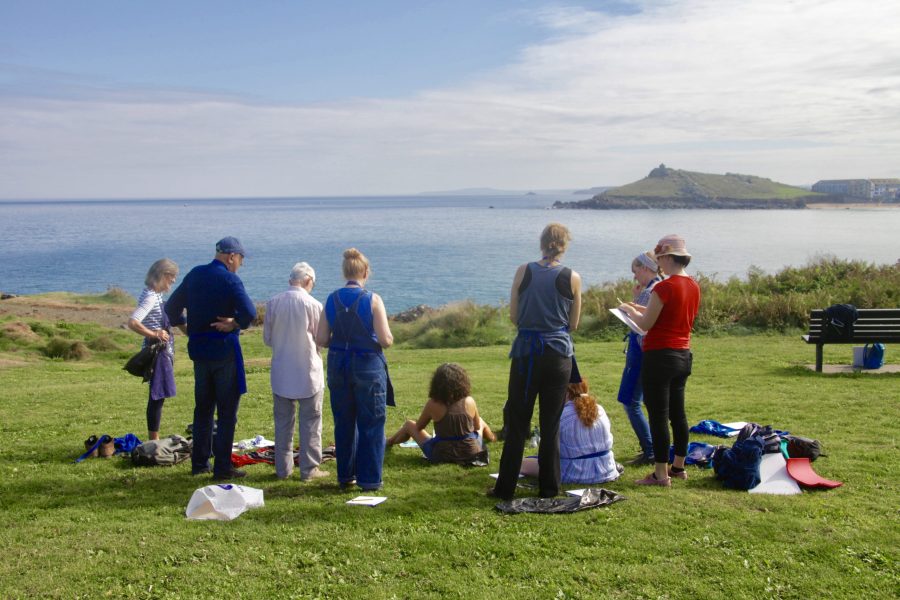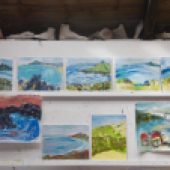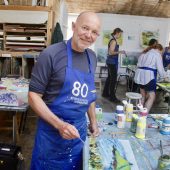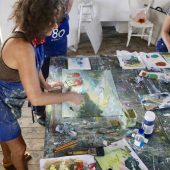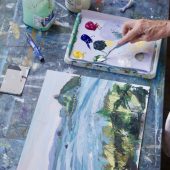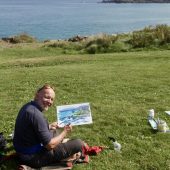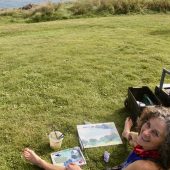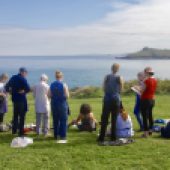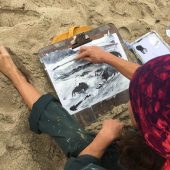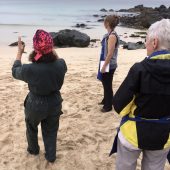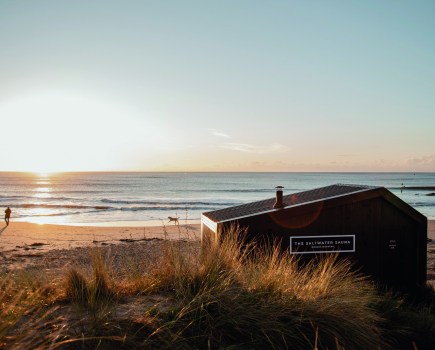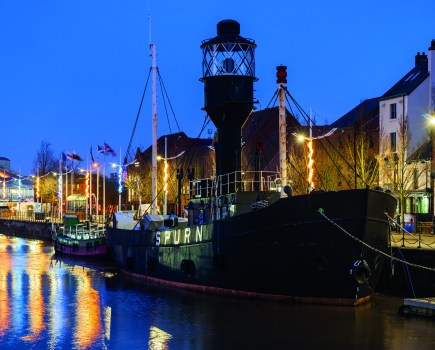It is a lazy cliché to say that the ‘quality of light’ attracts painters to St Ives. There were more prosaic reasons: in the late 19th century the railway reached west Cornwall, improving access. What has since become known as the ‘St Ives school of art’ dates back to the 1920s and fisherman artist, Alfred Wallis. Wallis documented the end of the sailing ship era on scrap wood, using a limited palette of paint from chandlers. His work was championed by painter Ben Nicholson, who settled in St Ives with sculptor Barbara Hepworth. Today you can’t flick a paintbrush without it spattering an art gallery or an artist. Tate St Ives re-opened in late 2017 after a multi-
million pound extension taking 18 months. All this art might inspire you. Luckily there’s somewhere to learn – or develop – your technique, and it’s no new upstart: St Ives School of Painting was 80 last year and runs short courses for budding artists.
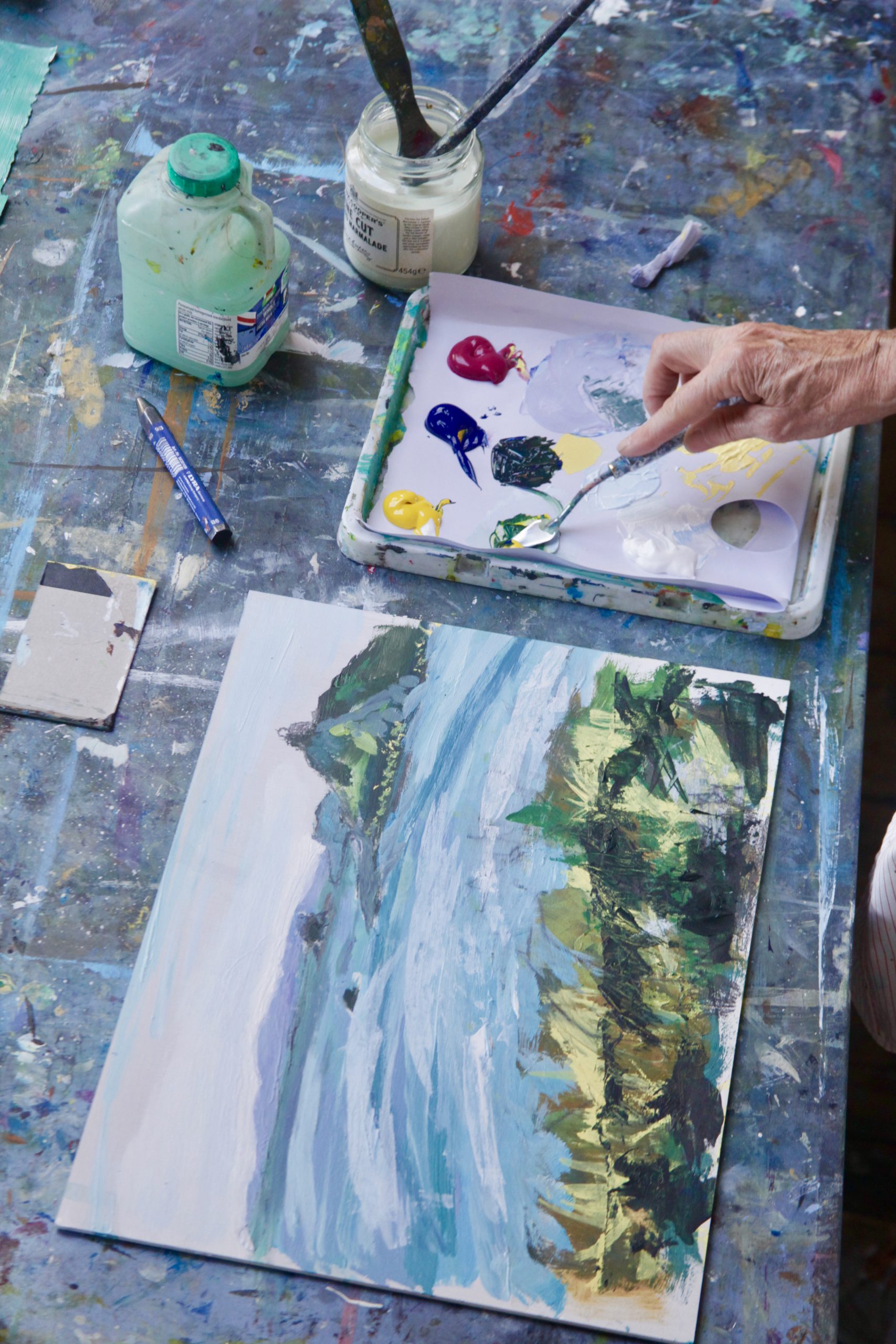
DAY ONE
9.30AM BACK TO SCHOOL
I walk from my B&B through the cemetery where Alfred Wallis is buried, past Tate St Ives, to the School of Painting. I feel like a little boy on his first day at school. An assistant makes coffee as we gather in the classroom for our weekend course, ‘Expressive Landscape in Mixed Media’. Our tutor, artist Ges Wilson, calls out a register. I still have first-day-at-school nerves. At least I don’t respond ‘Yes Miss’.
10AM A HISTORY LESSON
Nine students are present. Ges talks about the history of St Ives; its early pilchard fleets; how the narrow cobbled lanes would have been busy with donkeys, the bay full of luggers, the tiny houses lived in by fishermen and their families. The building in which we sit was once used for pilchard processing, net and boat storage. The fishing industry declined in the 19th century. In 1938, artist Borlase Smart founded the School of Painting, which has recently undergone a £4m renovation.
Ges shows us a book of 1940s expressionist artist Joan Eardley, who painted outdoors in Scotland, roping down canvases with boulders. ‘It was about being out there, feeling the wind, the space. It’s not exactitude. There are layers. Light and wind change all the time.’
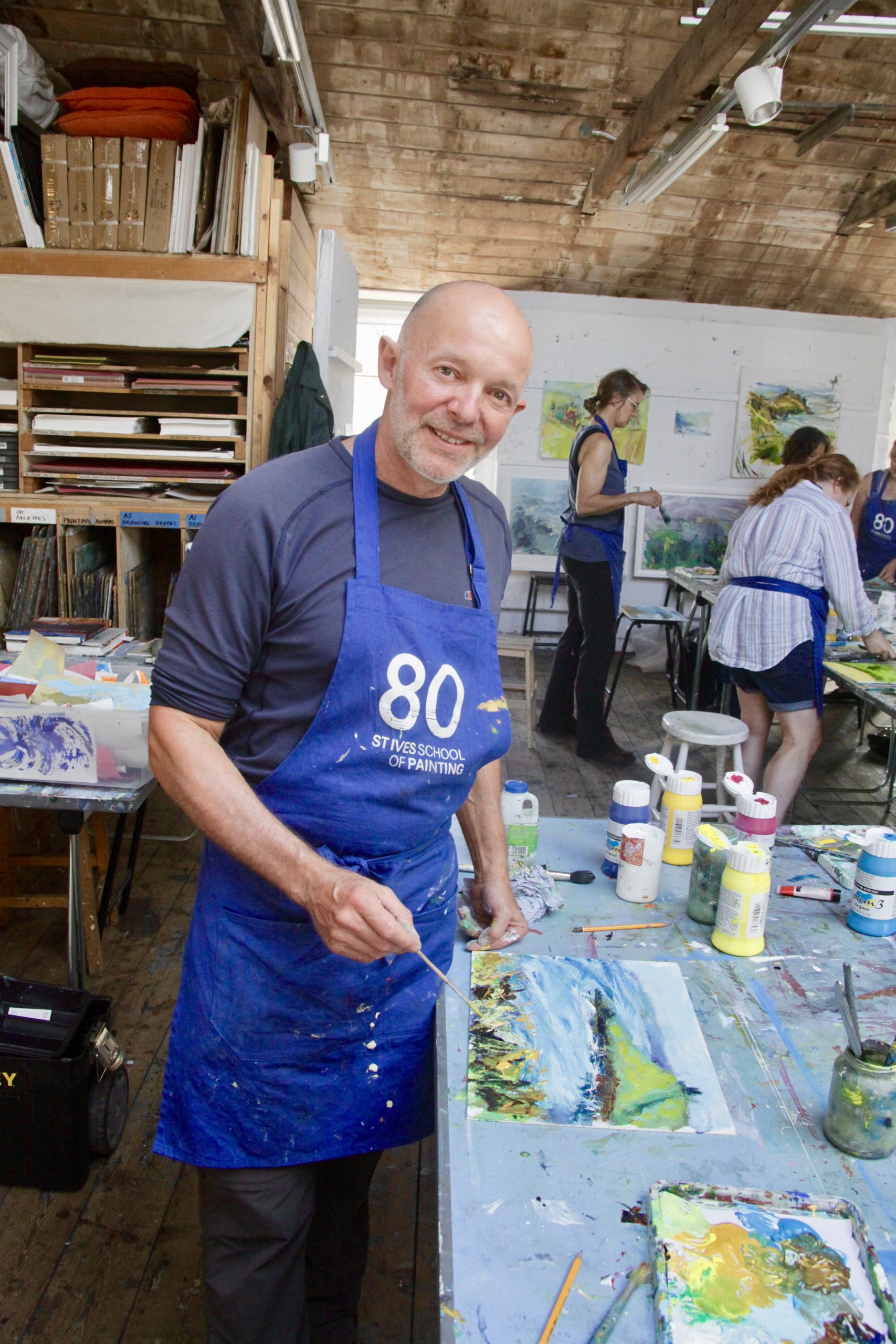
10.20AM THE OVERVIEW
We are each given a new sketchbook and we help ourselves to pencils from a box. Ges tells us what we can expect from the weekend. ‘This morning we’ll go out into the mizzle. This afternoon we’ll be back in the studio and do some expressive, gestural mark-making using different media,’ she says. ‘By the end of the day you’ll have some black and white studies.’ Tomorrow morning we’ll do a small study on board and learn how to do “tertiary mixing”, she adds. ‘You will go away with lots of information. It may take a long time to process. For beginners, I hope it’ll take away the fear of a blank piece of paper.’
10.30AM INTRODUCTIONS DONE
We introduce ourselves. Six are professional artists – teachers, print-makers. Several have art degrees. They want to free up their style, ‘to get rid of the parrot on my shoulder telling me this is how it should be done,’ says one. Three of us are beginners. I enjoy child-like dabbling with acrylics to make cards for family. I’d like to create more accomplished pieces.
11AM GOING ‘EN PLEIN AIR’
Ges tells us what we’ll need for our first session outside, or ‘en plein air’ to use arty terminology: sketchbooks, 2B and 4B pencils, clipboard, A3 paper, bin bag to sit on, blue paper towel, palette knife, black and white oil bars (like thick, hard crayons), palette, water container (recycled plastic milk bottles) with water, apron.
At Porthmeor Beach, Ges instructs us to draw something that takes our interest. ‘It could be one of the houses, the rocks or the view’. After five minutes we stop. She says we were mostly holding our pencils as if writing; that we should hold them loosely as if just picked up from a table. We try again. We’re loosening up, becoming freer. Then we do an exercise where we draw a single line without looking at the paper; another holding the pencil in our non-writing hand. The results are striking.
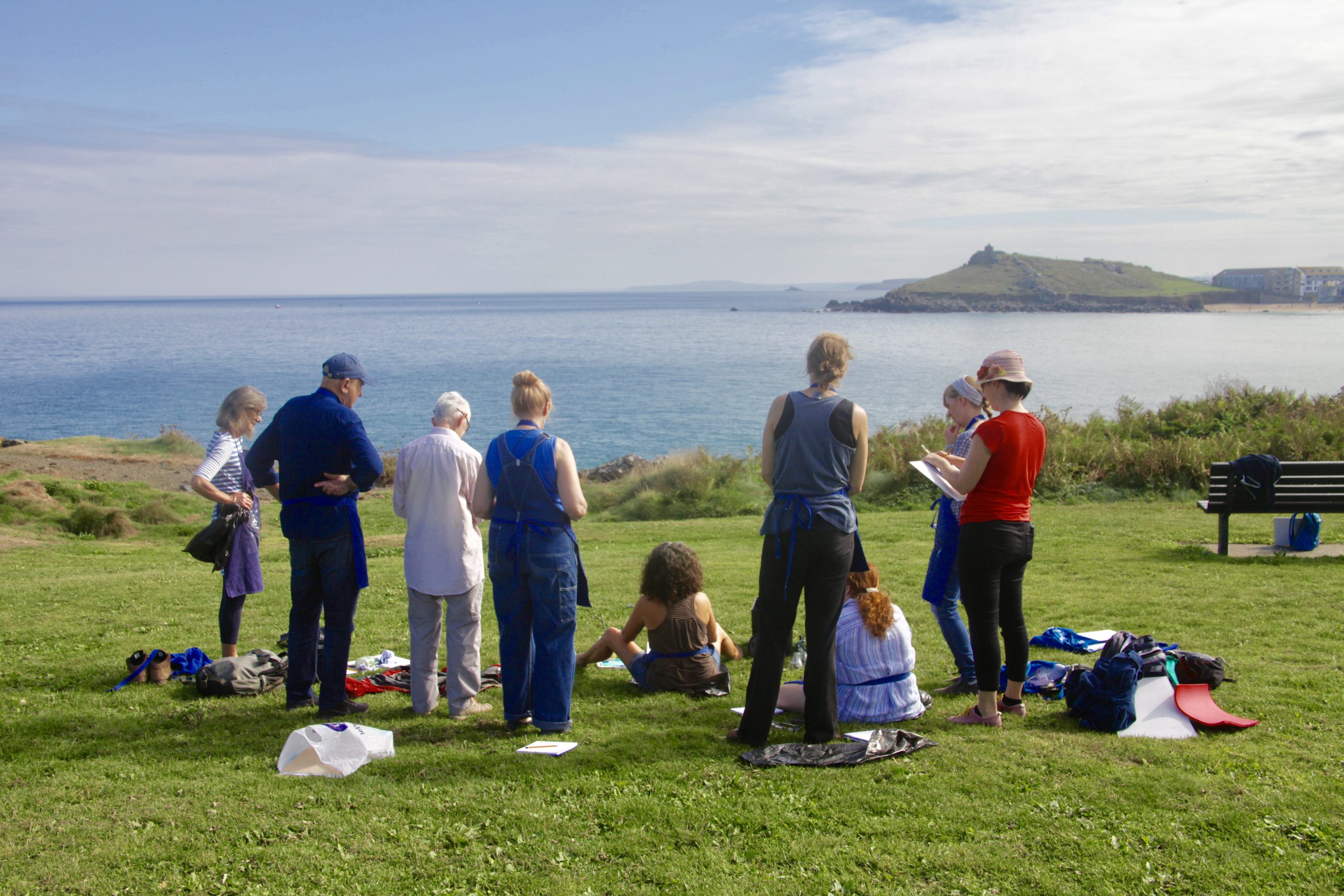
12PM MONOCHROME STUDY
We find a spot on the beach and sit with our paper on clipboard, oil bars and black and white acrylic paint on our palettes. Using tips we’ve just learnt, we’re to do a black and white study. I attempt some shoreline rocks. Holidaymakers watch. I’m relieved not to hear any sniggering.
1PM LUNCH CALLS
We head back to the School of Painting for an hour’s break. A deli nearby does great take-away salad and there’s a dinky public garden in which to sit. I visit the St Ives Society of Artists in the former Mariners’ church. Ges has some pieces on display. They look effortless.
2PM AFTERNOON SESSION
Back in the classroom, we each take an A3 piece of paper and are asked to ‘paint three shapes in two colours’. That seems easy: a shape for sea, one for sky, one for rocks. Then Ges makes us rotate around the classroom. We’re doing a ‘round robin’ of painting and mark-making, learning techniques for applying colour. Next step is to glue on two shapes of painted paper. Then we rotate again. Next: a palette knife;
a large brush; small brush; squeezing from a tube; pastel; graphite, splatters. Moving on from one collaborative ‘artwork’ to the next frees me from any sense of accountability. I still feel like a primary school kid but now I’m thoroughly enjoying myself. I can’t help grinning. By the time I return to ‘my’ original place, the palimpsest
I behold – adulterated by everyone else’s daubs and splashes – is certainly colourful, but I don’t like it.

3.40PM CRITICAL NOTES
We pin the results up and critique them. ‘It’s all about layers,’ says Ges. ‘You can always obliterate things you don’t like.’ She gives us 10 minutes to do so. Within this short time, some pieces now ‘work’ while others, including mine, still look a mess. ‘You can have lots of colour and not much mark-making or lots of mark-making and not much colour, but not both,’ explains Ges. One reworked piece now evokes rough sea, cliffs and a glimpse of sun after a storm. ‘I like the patch of calmness,’ I say. ‘That’s a good point,’ agrees Ges. ‘You need somewhere for the eye to rest. It can’t all be angry.’
3.50PM CHECKING OUT ART
We clear up and head off. I pop in to Tate St Ives, which has original works by Alfred Wallis. A quote from Patrick Heron: ‘Looking at something – anything – is more interesting than doing anything else, ever.’
If you’re searching for a staycation hotspot for your Cornish break, try these top Cornwall hotels.
DAY TWO
9.30AM DEVELOPING A STYLE
We gather in the studio. Ges has brought in some of her paintings. She talks us through them briefly. We agree her work shows immense energy. ‘If asked, I’d say my work is semi-abstract, intuitive, gestural and landscape,’ she says.
We set off to Clodgy Point. In autumn sunshine, we sit on the coast looking towards ‘the island’ while Ges teaches us tertiary colour mixing. ‘Knowing this is very useful
if you want to work outdoors. It means you need only carry three colours plus white with you.’ She starts by squeezing out a blob of each primary colour: yellow, blue, and magenta. She mixes secondary colours from these. ‘A tertiary colour is a secondary colour mixed with the unused primary,’ Ges explains. She mixes the acrylic paints with a palette knife. ‘Northern European colours are definitely tertiary,’ she says. ‘We don’t tend to have hot Australian or Mediterranean colours.’
Then she starts to paint. She begins with rough daubs of a purply-blue for the island and foreground, holding her brush loosely, blocking out shapes on her board. ‘And we have got a much lighter colour for the sea,’ she says and sweeps across a pale blue. ‘If you squint it helps,’ she adds. ‘And look at this hint of pink appearing in the sky, we’ll have some of that.’ She works fast. The results look childlike at first – this gives me confidence I can produce something similar. We take our boards, choose a spot and start painting. I stay next to Ges as she continues with her work. I’m soon disheartened. Mixing colours is far harder than it looks. ‘Too purple!’ says Ges. I realise I’m not helping matters by wearing polarising sunglasses. Ges wanders among
us offering tips. ‘Try a drier brush,’ she tells me. ‘Introduce some warmer colours in the foreground for the plants but don’t get too fiddly.’
1PM show time
After a break, we spend the last two hours working on one of yesterday’s pieces or today’s colour study. Ges says I’ve got the horizon far too high – a big obliteration is needed. I hint at the floral foreground using splatters and knife marks. Ges suggests some scumbling on the island and some lines to hint at waves and tide. Time disappears without once looking at my phone or thinking of other things. At the end of the session we put our works up on a wall and Ges critiques them, praising our progress.

3PM the finish line
We wash our brushes, clear away everything, make cups of tea, exchange contact details, and put our artworks in clear plastic folders to take home. Hesitantly, I place my painting so it faces outwards for all to see.
NEED TO KNOW
HOW TO GET STARTED
St Ives School of Painting
runs courses in its Porthmeor Studios all year round. They range from two days to a week long. Choose a course based on your experience and the medium in which you wish to work. Two-day courses cost from £185 and include all materials. To book, call 01736 797180 or email [email protected]. St Ives School of Painting, Porthmeor Studios, St Ives, Cornwall, TR26 1NG (schoolofpainting.co.uk).
GETTING THERE
St Ives train station is 15 minutes’ walk from the School of Painting. CrossCountry (crosscountrytrains.co.uk) runs services to nearby Penzance from northern England and the Midlands.
WHERE TO STAY
For a supremely comfortable B&B with sea views and delicious breakfasts, just 10 minutes’ walk from the school, stay at West By Five, 7 Clodgy View, St Ives, Cornwall TR26 1JG. Doubles from £120 (01736 794584, westbyfive.com).
Ask the pro
Artist and tutor Ges Wilson graduated with a BA (Hons) in art from Exeter in the 1970s. She then did a PGCE followed by the Integrated Masters Programme at Falmouth. She lives in a small village outside St Ives. As well as painting, she enjoys sailing and surfing. ‘I couldn’t imagine myself isolated in my studio or painting outside alone seven days a week. I enjoy sharing what I’ve learnt and get excited about how others enjoy this learning. It’s humbling too – some students will become better artists than I am. I love the way students discover new possibilities opening up for them, confidence in themselves and new ways of working. Finding wild places and elemental spaces is increasingly hard in the UK, but you can still experience them in Cornwall. That’s why my paintings begin outside; the experience of feeling waves, wind, tides, light, rain, sun
is what the work hopefully suggests to the viewer.’

